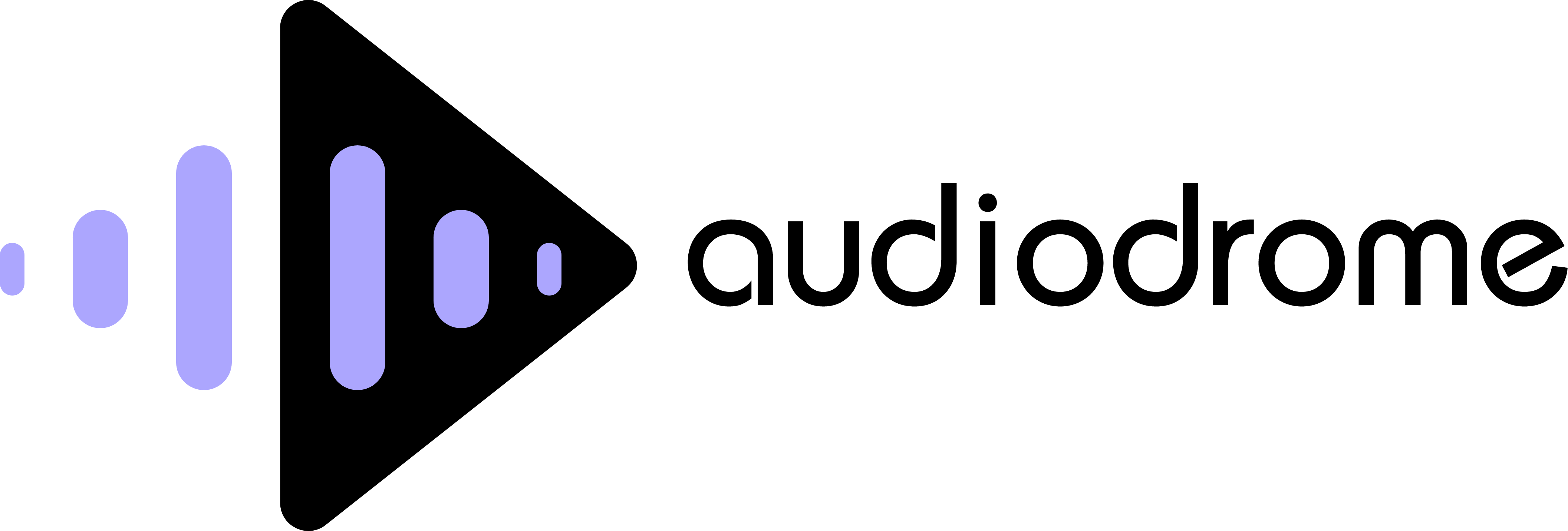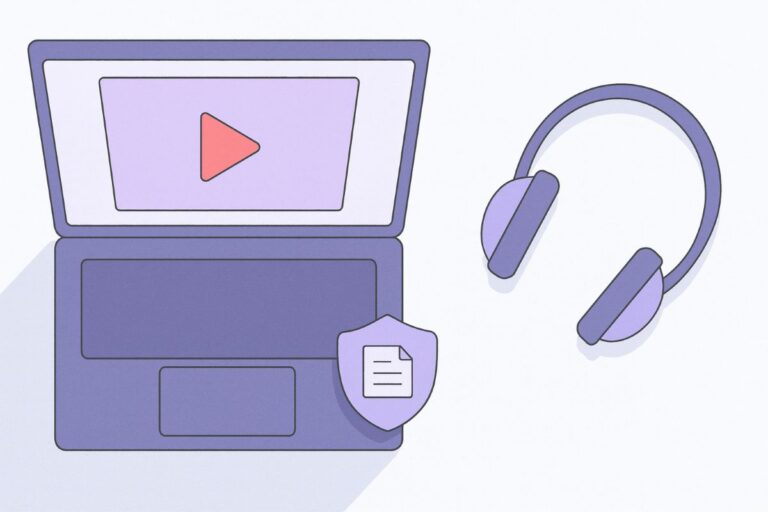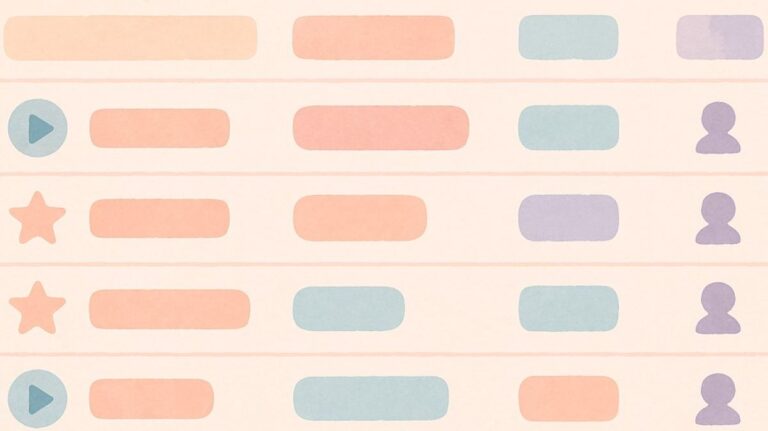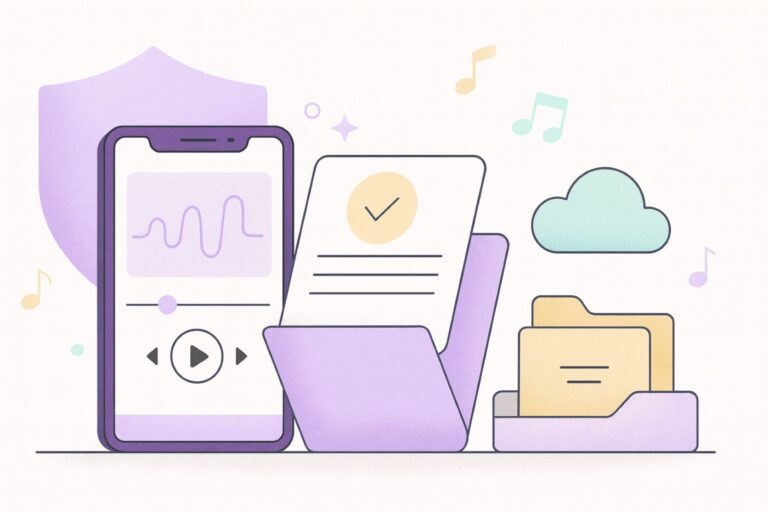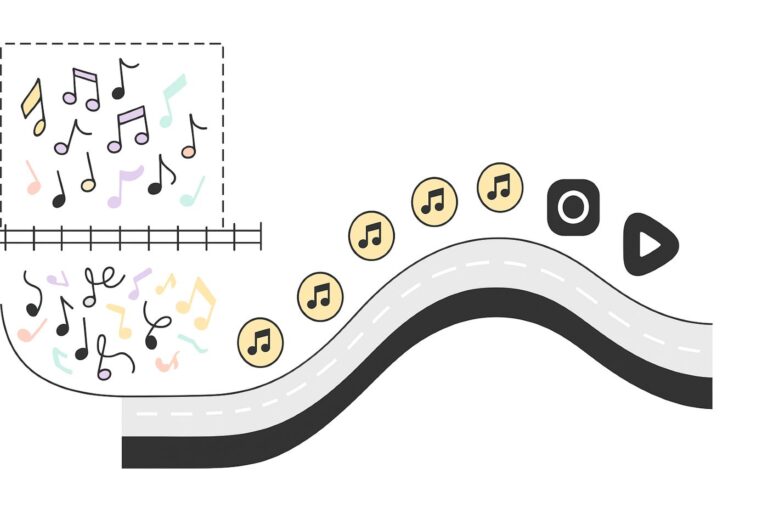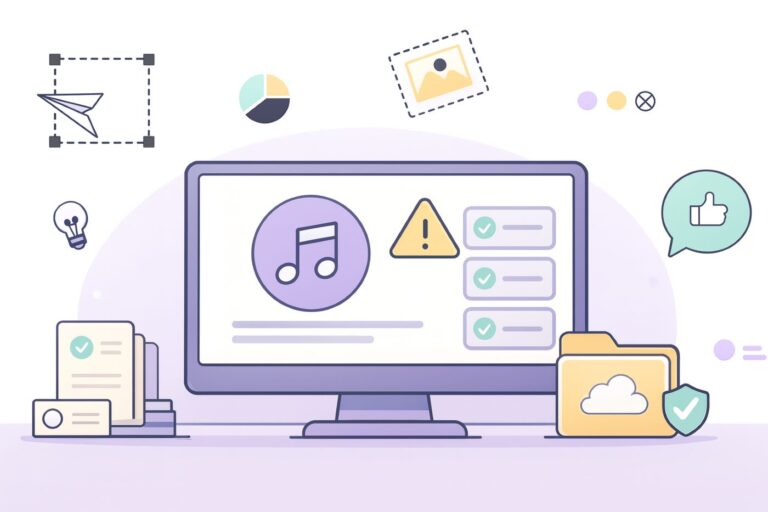YouTube Shorts Monetization With or Without Music
Audiodrome is a royalty-free music platform designed specifically for content creators who need affordable, high-quality background music for videos, podcasts, social media, and commercial projects. Unlike subscription-only services, Audiodrome offers both free tracks and simple one-time licensing with full commercial rights, including DMCA-safe use on YouTube, Instagram, and TikTok. All music is original, professionally produced, and PRO-free, ensuring zero copyright claims. It’s ideal for YouTubers, freelancers, marketers, and anyone looking for budget-friendly audio that’s safe to monetize.
Music can fund your Shorts or drain them. This guide shows the pool math, the 0, 1, or 2 tracks effect, the modules you must accept, and the steps to keep earnings flowing without claims, mutes, or policy surprises later.
What counts as monetizing a Short (2025)
On YouTube, you can monetize Shorts in four ways, and each follows specific rules.
Ads between Shorts (pooled) → creator pool → you keep 45% of your allocation
Ads don’t attach to one Short. YouTube adds all Shorts ad revenue into a monthly country pool, deducts music costs, then distributes the remainder by each channel’s share of eligible engaged views. You then receive 45 percent of your allocation.
.jpg)
Music changes pool size, not your percentage. Using zero tracks sends ad revenue fully to the creator pool. One track sends half to music. Two tracks send about two-thirds. Whatever remains allocates by engaged views, and you keep 45 percent.
YouTube Premium on Shorts (watch-time based)
Premium fees create a separate pot. For Shorts, you must accept Shorts Feed Monetization Module. YouTube allocates Premium revenue to creators based on watch time from Premium viewers on your Shorts, then pays you using the same 45 percent share.

Premium earnings don’t hinge on ads. When a Premium member watches your Short, their fee contributes via watch time, even if no ad appeared. This revenue is separate from ad pools and adds another source alongside Super Thanks and Shopping.
Fan funding on Shorts (Super Thanks)
Super Thanks lets viewers buy a one-time tip that posts a highlighted comment on your Short. Once enabled, it appears on past and future uploads. You receive revenue from these purchases alongside ads and Premium, subject to policy and availability.

Enable it in Studio under Monetization. Super Thanks surfaces on Shorts where policies allow, and viewers leave a paid comment in the feed. Treat it as incremental income that stacks with ads and Premium instead of being main revenue driver.
Shopping (Shorts Affiliate / product tagging basics)
Shopping lets you tag products on a Short and show a sticker. On Shorts, only the first tagged item displays as the sticker. Reorder tags to choose which product appears. You set placement and size inside the YouTube mobile app.
Eligibility and availability vary by country and program access. Use the YouTube Shopping affiliate flow where available, tag in-stock items from participating retailers, and add a call to action in the Short and description so viewers know where to tap.
Shorts ad money: the pool model in 3 steps (simple math)
Ads run between Shorts, not on individual videos. YouTube groups this ad revenue by country each month into a single pool. Your Shorts add to the pool through engaged views, so strong hooks and retention metrics directly increase your footprint.

Music changes the pool before sharing. Zero tracks sends all revenue to the creator pool. One track diverts half to music, while two tracks divert about two thirds, leaving a smaller pool that distributes by engaged views across eligible creators.
0 Tracks
100% of associated revenue goes into the Creator Pool. No portion is reserved for music, so the entire amount is shared among eligible Shorts creators.
1 Track
50% of the associated revenue enters the Creator Pool and the remaining 50% is reserved for music rights holders before allocations are calculated.
2 Tracks
About 33% of total revenue goes into the Creator Pool, while around 67% is reserved for music. The smaller remaining pool is then distributed by engaged views.
YouTube allocates the pool by share of engaged views in your country. That allocation becomes your base. You receive forty five percent as payout, so growth comes from raising engaged views and avoiding music choices that reduce the pool upstream.
Mini Shorts Payout Estimator
Enter a scenario for your monthly ads pool, choose a currency, and set your share of engaged views. The tool shrinks the pool based on music, calculates your allocation from engaged views, then applies the fixed forty-five percent creator rate to show a payout.
Use the music toggle to model zero, one, or two tracks. Zero tracks keeps the pool intact, one track halves the pool, two tracks leaves about one third. Your rate does not change, only the pool size changes before allocations, so engaged views still drive outcomes.
This estimator illustrates YouTube’s pool logic, not official pool totals. Premium, Super Thanks, and Shopping sit outside this math. Treat results as directional and final check with YouTube Analytics when possible.
NOTE: YouTube does not publish a “monthly ads pool by country,” so there’s nowhere you can look it up.
Practical workaround: use a scenario value (e.g., $25,000) in the widget, or back-solve from your own YouTube Analytics. For a past month, take Shorts Ads revenue, divide by 0.45 to get your allocation, then your share of engaged views (%) = allocation ÷ creator-pool × 100. The pool figure still requires a scenario because YouTube doesn’t disclose it.
Mini Shorts Payout Estimator
Pick music usage, enter the monthly ads pool and your engaged-views share. The tool shows pool shrink from music and your payout at 45% of allocation. Premium and fan funding are separate and not included here.
Uses official pool logic: 0 tracks 100% to creators, 1 track 50% to creators, 2 tracks about 33% to creators. Your 45% rate stays fixed; music only changes pool size.
Music sources & what they mean for payouts
The type of music you choose directly affects how Shorts ad revenue is divided. YouTube treats every source differently, depending on whether it belongs to the Shorts music system, the Audio Library, or a third-party royalty-free library. Knowing which applies helps you predict deductions before uploads go live.
Shorts “Sounds” (partner music)
When you pick a track from the Shorts in-app “Sounds” library, YouTube flags it as partner music and triggers the one-track or two-tracks deduction at the pool step. This means part of the ad revenue goes to music rights holders before creator allocations.
.jpg)
These tracks come from licensed labels and publishers who partner with YouTube. The deduction happens automatically when your Short uses any identified song, and it scales with the number of tracks. Your 45-percent creator share stays the same, but the pool shrinks before payouts.
YouTube Audio Library (Studio)
Music from the YouTube Audio Library usually behaves like zero tracks in the pool model. These files are pre-cleared by YouTube and do not generate Content ID claims, so ad revenue tied to them flows entirely into the Creator Pool.

Creators often choose Audio Library tracks for safe monetization because they minimize risk. As long as the file has no attribution requirement or expired license terms, it keeps the Short eligible for full pool participation without deductions.
Third-party RF
Third-party royalty-free libraries like Artlist, Epidemic Sound, or Soundstripe behave differently depending on detection. If YouTube does not claim the track through Content ID, the system treats it as zero tracks, so all related revenue joins the Creator Pool.






If the track is identified through a partner deal or Content ID claim, YouTube reclassifies it as music within the pool math. That means a portion of the total ad revenue moves to the music side before allocations, even if you paid for a license outside YouTube’s ecosystem.
Eligibility & modules you must accept
To unlock fan funding and shopping features under the expanded YouTube Partner Program, your channel needs at least five hundred subscribers, three public uploads within the past ninety days, and either three thousand public watch hours or three million Shorts views during that same period.

Full ad revenue sharing, including both Shorts and YouTube Premium earnings, requires a higher threshold. You must reach one thousand subscribers and either four thousand valid public watch hours or ten million Shorts views in the past ninety days to qualify for full monetization access.

Inside YouTube Studio, you must also accept the Shorts Feed Monetization Module. This agreement activates your eligibility for pooled ad revenue and Premium payouts on Shorts. Without enabling it, your channel can still post Shorts but cannot receive income from them.
Length rules & music limits that break monetization
YouTube now allows Shorts up to three minutes long, but the system still treats music differently past the one-minute mark. Shorts longer than sixty seconds cannot use the in-app audio picker, so licensed music must be edited in externally before upload.
When a Short runs over one minute with claimed or copyrighted music, YouTube blocks monetization or removes the sound entirely. The platform treats these uploads as non-monetizable because extended copyrighted audio conflicts with music license limits tied to the Shorts format.

To stay monetizable, keep music-based Shorts under sixty seconds and use tracks from the YouTube Audio Library or properly licensed royalty-free libraries. This ensures your content qualifies for the creator pool and avoids automatic claim or mute actions during processing.
Optimization checklist (creator-friendly)
Start by meeting the basic eligibility requirements that unlock Shorts monetization. Maintain consistent uploads, reach the required subscriber and view thresholds, and keep your channel policies clean. Regular posting signals activity, while verified identity and location ensure your account qualifies for payouts.
Accept all required monetization modules inside YouTube Studio, including the Shorts Feed Monetization Module. This activates pooled ad revenue and Premium payouts for Shorts. Without these permissions enabled, YouTube cannot connect your content to the payout system, even if your videos perform well.
Avoid reused or duplicated content and keep claimed or copyrighted Shorts under sixty seconds. YouTube rewards originality because reused clips or long claimed music often trigger limited monetization or removal. Self-rate every upload as suitable for advertisers to help YouTube match it with higher-value ads.
Use original compositions, Audio Library tracks, or royalty-free clean music whenever possible. These sources keep your Shorts fully eligible and prevent pool deductions that occur when partner or claimed tracks are detected. Every safe music choice protects your ad share and simplifies the payment path.
Test early hooks, audience retention, and posting cadence because the Shorts ad pool rewards engaged views, not just total impressions. A well-structured posting rhythm and watch-time consistency help your Shorts earn a larger share of the creator pool across eligible regions.
Shorts Optimization Checklist
- I meet the eligibility rules with consistent uploads, the required subscriber count, and enough Shorts views or watch hours.
- I accepted all required monetization modules in YouTube Studio including the Shorts Feed Monetization Module.
- I avoid reused or duplicated content and keep claimed or copyrighted Shorts under sixty seconds.
- I self-rate every upload as suitable for advertisers to help YouTube match higher-value ads to my content.
- I use original music, YouTube Audio Library tracks, or royalty-free clean sources to prevent deductions in the creator pool.
- I test early hooks, improve audience retention, and maintain a steady posting rhythm to raise my share of engaged views.
Long-form video monetization
Long-form ads pay a standard split where creators receive fifty-five percent of revenue from ads that run on their videos. You must qualify for the YouTube Partner Program to access ad sharing, fan funding, and other features that pay.
YouTube Premium adds a second stream. When Premium members watch your long-form videos, YouTube allocates a portion of their monthly fee based on watch time and pays you accordingly. This payment is separate from ads and does not require ads to appear.
If you use Creator Music revenue-sharing tracks in a long-form video, YouTube adjusts the creator share to cover music. One track typically halves the standard fifty-five percent to twenty-seven point five percent, with possible extra deductions for broader music rights.

Fan funding can stack on top. Viewers can purchase Super Thanks on long-form videos, and eligible channels can also earn through memberships and other live features where available. These payments sit alongside ads and Premium and follow policy and availability rules.
Monetization still depends on policy compliance and authentic content. YouTube’s monetization policies exclude inauthentic or repetitive material and require ongoing adherence to advertiser-friendly guidelines. Keep content original and policy safe to maintain access to long-form revenue features.
Live streams monetization
Set up ads, Super Chat, Super Stickers, and memberships in YouTube Studio before you go live. These features require YouTube Partner Program eligibility and proper policy compliance, and they let viewers support you during the stream in real time.
Run pre-rolls automatically and trigger mid-rolls from Live Control Room during natural pauses to protect retention. Not every viewer will see an ad, and those who do will rejoin the stream after it ends or if they skip.

Offer Super Chat and Super Stickers so fans can buy highlighted messages and animations during chat. Turn them on in Studio and verify eligibility and regional availability before your event to avoid surprises.
Enable channel memberships for recurring support and live perks. Eligible creators can also run members-only live streams or members-only chat, which can increase perceived value for paying supporters while you stream.
Treat music carefully on live. YouTube scans streams for third-party content and may mute, replace the feed, or stop the stream if it finds copyrighted material you lack rights to use. Prefer cleared tracks or the YouTube Audio Library.
Next steps that actually pay
Pick safe music, keep Shorts under sixty seconds when claimed audio appears, and enable required monetization modules. Track engaged views, not impressions. Use the estimator to compare zero, one, or two tracks, then ship and refine with Analytics each month.

Audiodrome was created by professionals with deep roots in video marketing, product launches, and music production. After years of dealing with confusing licenses, inconsistent music quality, and copyright issues, we set out to build a platform that creators could actually trust.
Every piece of content we publish is based on real-world experience, industry insights, and a commitment to helping creators make smart, confident decisions about music licensing.

